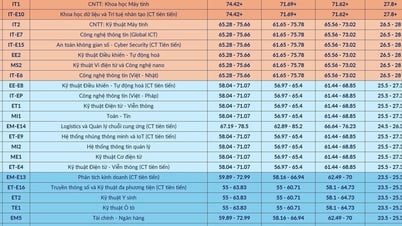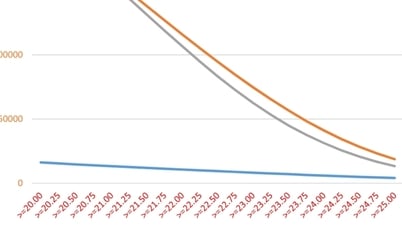Commenting on the Chemistry exam on the morning of June 27, teacher Ngo Xuan Quynh, a teacher at Phan Dinh Phung High School ( Hanoi ), said that the structure of this year's exam consists of 3 parts, clearly reflecting the orientation of competency assessment.
 |
Teacher Ngo Xuan Quynh, teacher at Phan Dinh Phung High School (Hanoi) |
Part I (18 objective multiple choice questions) focuses on testing the ability to reproduce knowledge, recognize concepts and basic understanding.
Next, in part II (4 True/False statements, each with 4 ideas) students are required not only to remember knowledge but also to analyze, compare, synthesize and evaluate statements based on in-depth knowledge and understanding of practical or experimental contexts.
Finally, part III (6 essay questions/comprehensive problems) is the most differentiated part, focusing on integrated, interdisciplinary problems, requiring candidates to apply a lot of knowledge, complex calculation skills and the ability to process large numbers of data.
“Thus, the three-part structure of the exam is not simply a classification of difficulty but also a concretization of the capacity assessment model, from foundation, application ability to solving complex problems, reflecting the spirit of innovation of the 2018 General Education Program,” said Mr. Quynh.
What will the score be?
Based on the structure and difficulty level of Chemistry exam code 0329, teacher Ngo Xuan Quynh made some predictions about this year's score distribution.
An average score (6.75 – 7.25 points) can be achieved if candidates have a solid grasp of the basic knowledge of Part I and do well in Part II.
Most of the questions in Part I (except for some of the last questions such as Questions 16, 17, 18) are questions about recognition and understanding of basic knowledge of all three blocks 10, 11, 12 (for example: nomenclature, characteristic chemical properties, electron configuration, basic equilibrium constants). Students who have a good grasp of textbook knowledge and have reviewed thoroughly can easily get about 12-14 correct answers in this part. This will be a solid "floor score" for candidates.
Part II (True/False): Questions in Part II also require a good grasp of theory and the ability to analyze and make judgments. Students can gain some marks from questions on NaOH electrolysis (Question 1 - Part II), polymers (Question 3 - Part II) and basic organic synthesis/spectroscopy (some ideas in Question 2 - Part II).
To achieve a good score (7.5 - 8.5 points), students need to solve well the application questions at the end of Part I and the questions in Part II, and at the same time handle some basic problems in Part III.
At the same time, candidates need to do well on the questions in Part II, especially the ideas related to basic calculations and deeper theoretical analysis (such as calculating efficiency in organic synthesis - Question 2c - Part II, or experimental analysis - Question 4 - Part II).
In Part III, if candidates can solve one or two more basic calculation problems (for example, a problem about heat of combustion if the information is clear enough, or calculating %C in cast iron if they understand the problem well), they will have a chance to rise to a good score.
Good/excellent score (8.75 - 10 points) is for candidates with outstanding thinking, calculation and analysis abilities, who can accurately and effectively solve high-level applied problems in Part III (such as steelmaking, thermochemistry), requiring knowledge synthesis, complex calculation skills and the ability to process large numbers of data in a limited time.
"This year's 10 points will decrease a lot compared to last year" - Mr. Quynh said.
Source: https://tienphong.vn/pho-diem-mon-hoa-2025-kho-cham-diem-10-de-dat-diem-san-post1755229.tpo





![[Photo] General Secretary To Lam receives Chairman of the National People's Congress of China Zhao Leji](https://vphoto.vietnam.vn/thumb/1200x675/vietnam/resource/IMAGE/2025/8/31/5af9b8d4ba2143348afe1c7ce6b7fa04)
![[Photo] National Assembly Chairman Tran Thanh Man welcomes and holds talks with Chairman of the National People's Congress of China Zhao Leji](https://vphoto.vietnam.vn/thumb/1200x675/vietnam/resource/IMAGE/2025/8/31/9fa5b4d3f67d450682c03d35cabba711)
![[Photo] Marching together in the hearts of the people](https://vphoto.vietnam.vn/thumb/1200x675/vietnam/resource/IMAGE/2025/8/31/8b778f9202e54a60919734e6f1d938c3)




























































































Comment (0)